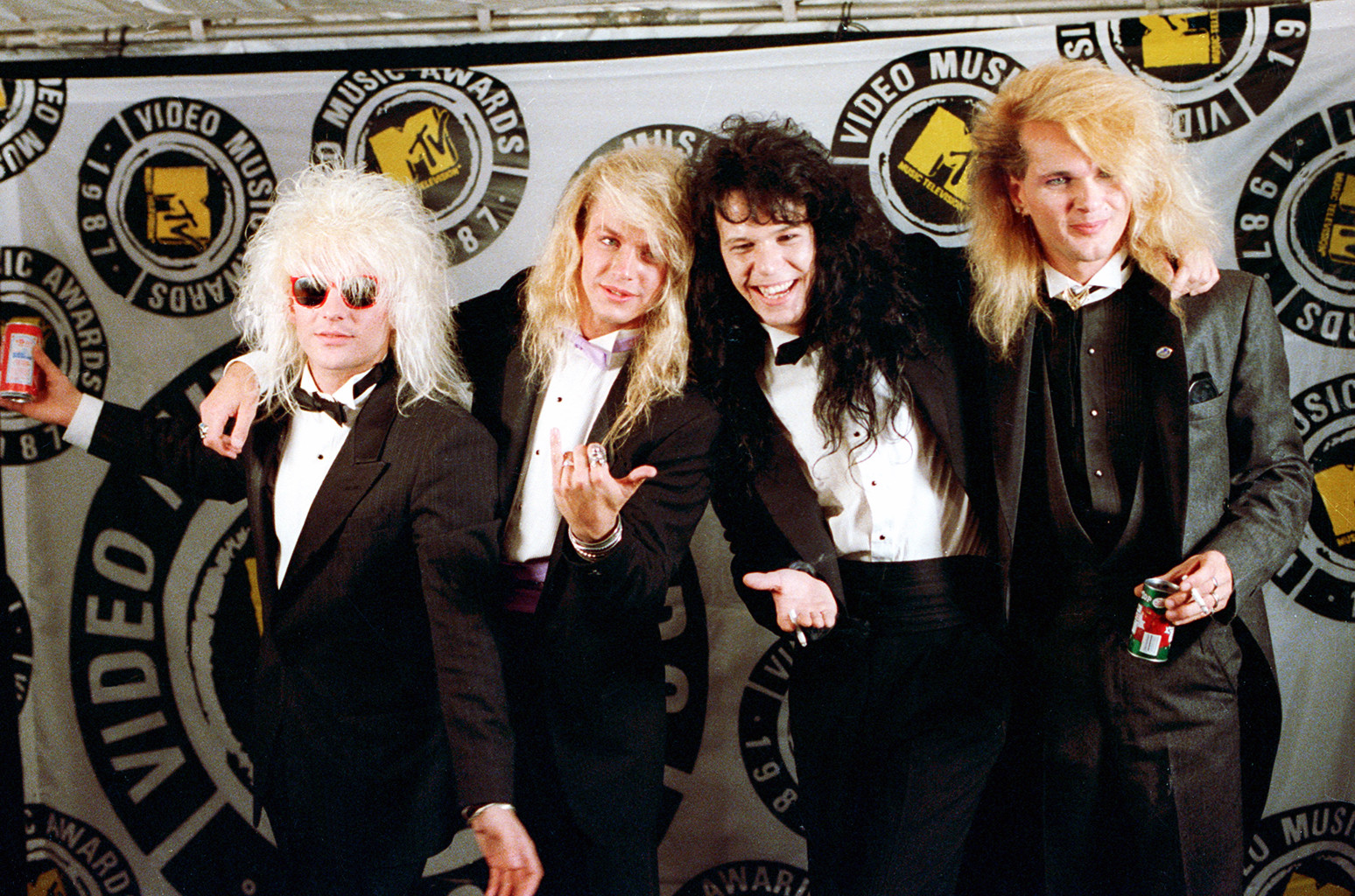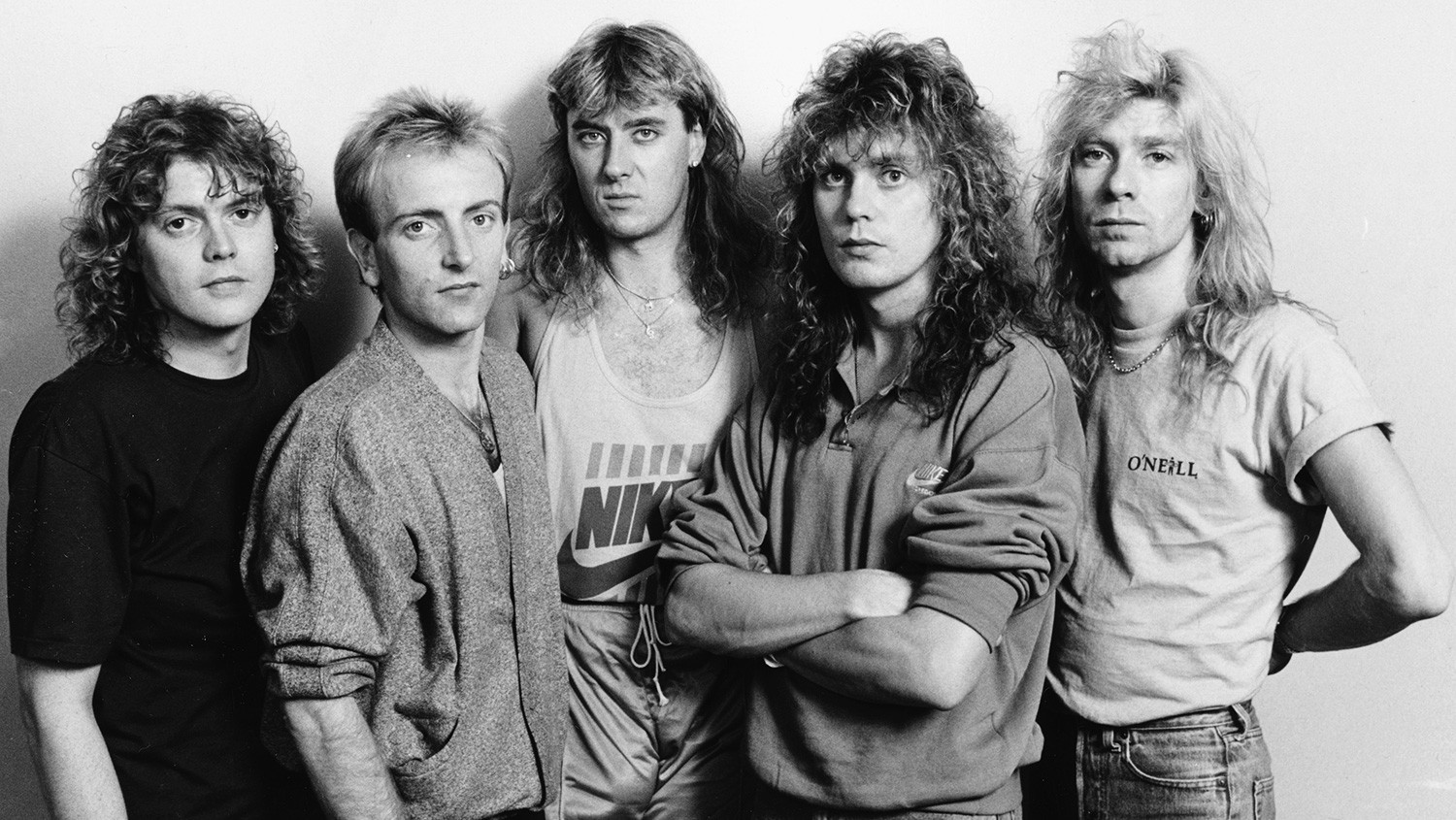Mötley Crüe, the name synonymous with hard-partying, leather-clad rebellion and a sound as loud as a jackhammer, exploded onto the Los Angeles glam metal scene in 1981. By 1987, their notoriety had reached such heights that they graced the cover of Rolling Stone, heralded as the kings of heavy metal, a genre declared “loud,” “ugly,” and undeniably here to stay. This bold statement perfectly encapsulates the legacy of Mötley Crüe, a band whose journey has been as much about near self-destruction as it has been about rock and roll anthems. From their breakthrough metal assault, 1983’s Shout at the Devil, to navigating internal chaos, the quartet of Vince Neil, Tommy Lee, Mick Mars, and Nikki Sixx became infamous for their backstage antics matching their on-stage energy.
Despite the whirlwind of controversy and personal battles, Mötley Crüe’s musical impact is undeniable. They’ve sold over 100 million albums worldwide, a testament to their enduring appeal. This includes their 1989 masterpiece, Dr. Feelgood, which achieved six-times platinum status. This album showcased the band’s potential when channeled by veteran producer Bob Rock and fueled by a newfound, albeit perhaps temporary, sobriety.
Alt text: Motley Crue band portrait from 1983, showcasing their iconic glam metal image.
However, the road after Dr. Feelgood wasn’t always smooth. The band experienced periods of turbulence, including the departures of Neil and Lee at different times due to internal conflicts. The introduction of John Corabi as Neil’s replacement for the 1994 self-titled Motley Crue album was met with significant fan backlash. Yet, time, maturity (and maybe exhaustion from decades of excess) eventually paved the way for a reunion of the original lineup. In 2005, they embarked on a successful reunion tour, reigniting the Mötley Crüe flame. This resurgence led to the release of the critically acclaimed Saints of Los Angeles in 2008 and continued touring triumphs, culminating in a final concert on December 31, 2015, at the Staples Center in Los Angeles. In a fittingly chaotic send-off, Tommy Lee’s infamous roller coaster drum kit malfunctioned mid-show, a symbolic final act for a band that had spent over three decades living life on the edge.
Now, let’s dive into the heart of the Crüe’s musical legacy with a countdown of their top 15 best songs that have defined generations of rock fans.
15. “Anarchy in the U.K.”
Mötley Crüe taking on the Sex Pistols? It’s a match made in rock and roll heaven. If any band could inject punk rebellion with a dose of glam metal swagger, it’s the Crüe. Their cover of “Anarchy in the U.K.” (originally by Sex Pistols) from Decade of Decadence ’81-’91 is a shot of adrenaline to the punk classic, amplified by Nikki Sixx’s sneering basslines, raucous gang vocals, and Tommy Lee’s drumming that pushes the tempo into overdrive. It’s a testament to their ability to take a song and Crüe-ify it.
14. “White Trash Circus”
From the New Tattoo album, “White Trash Circus” is a raucous anthem that perfectly encapsulates the band’s chaotic lifestyle on the road. This track is a comedic and self-aware look at the madness of touring. The lyrics paint vivid pictures of band infighting and drug-fueled antics with lines like, “Been living on the road about a year-and-a-half/If we go another mile, we’re gonna kick each other’s ass/Someone’s gonna quit/Or someone’s gonna die/We don’t give a shit/’Cuz we’re busy gettin’ high.” It’s a tub-thumping, hilarious ride through the circus of rock stardom.
13. “Smokin’ in the Boys Room”
Another successful cover, this time from Brownsville Station, “Smokin’ in the Boys Room” became Mötley Crüe’s first foray into the Top 40. Featured on 1985’s Theatre of Pain, this track is arguably the band’s most innocent anthem. It’s a playful, catchy tune that fit perfectly within their glam rock era. The song’s pop structure and singalong chorus made it a hit, showcasing a lighter, more accessible side of the Crüe without sacrificing their rebellious spirit.
12. “You’re All I Need”
Venturing into darker territory, “You’re All I Need” from Dr. Feelgood is a tragic ballad that explores obsession and heartbreak. This Motley Crue song is a surprisingly poignant departure from their usual party anthems. From the delicate piano intro to the shimmering guitar work, the song is beautifully haunting. Despite its quality, the music video, depicting domestic violence, was banned by MTV, likely hindering its chart performance, where it stalled at No. 83 on the Billboard Hot 100.
11. “Too Young to Fall in Love”
“Too Young to Fall in Love,” from Shout at the Devil, is pure Mötley Crüe energy. This track is driven by Mick Mars’ signature jagged guitar riffs and Tommy Lee’s dynamic drumming. The song is instantly memorable with its catchy chorus and powerful delivery. While the lyrics, “Well, now I’m killing you/Watch your face turning blue,” drew criticism from the Parents Music Resource Center, the band embraced the controversy, turning it into publicity and further solidifying their rebellious image.
10. “Home Sweet Home”
“Home Sweet Home,” also from Theatre of Pain, marked a significant shift for Mötley Crüe, revealing a previously unseen emotional vulnerability. This power ballad is a heartfelt ode to the longing for normalcy amidst the chaos of touring. Featuring Tommy Lee on piano, a surprising element at the time, the song became an MTV staple, dominating video airwaves. “Home Sweet Home” evolved into a concert closer, demonstrating the band’s ability to connect with audiences on a deeper emotional level and proving they were more than just party animals.

Alt text: Poison photographed at the MTV Video Music Awards in 1987, showcasing the glam metal scene alongside Motley Crue.
9. “Primal Scream”
“Primal Scream,” from Primal Scream, is a cathartic anthem that channels the raw energy of frustration and the need for release. Many Motley Crue Songs touch upon the consequences of excess, and “Primal Scream” directly addresses those demons. With introspective lyrics and Vince Neil’s commanding vocals acting as a motivational force, the song serves as a kick in the ass to overcome personal struggles. It’s a powerful and relatable track about breaking free from negativity.
8. “Same Ol’ Situation (S.O.S.)”
“Same Ol’ Situation (S.O.S.)” from Dr. Feelgood showcases Mötley Crüe’s lighter side with a humorous take on relationship woes. This song is a catchy and upbeat party anthem about being dumped by women who leave for other women. As Vince Neil himself stated, “It’s worse than a chick leaving you for a guy, because there’s nothing you can do about it.” Despite the sting of rejection, the band shrugs it off with good humor and the memorable line, “Girls will be girls,” making it a relatable and fun track.
7. “Kickstart My Heart”
“Kickstart My Heart,” another gem from Dr. Feelgood, is a high-octane anthem inspired by Nikki Sixx’s near-fatal heroin overdose in 1987. This song is pure adrenaline, reflecting the frantic energy of Sixx’s revival with adrenaline shots. It’s a whirlwind of shouts, vocoder effects, and Mick Mars’s rugged guitar riffs, capturing the chaotic and exhilarating experience of cheating death. “Kickstart My Heart” is a testament to the band’s resilience and their ability to turn personal tragedy into rock and roll gold.
6. “Girls, Girls, Girls”
“Girls, Girls, Girls,” the title track from the album of the same name, is a celebratory ode to strip clubs around the world. This song is a classic Mötley Crüe party anthem, celebrating their love for strip clubs from Los Angeles to Fort Lauderdale. Driven by a spirited rhythm section and some of Mick Mars’s most impressive guitar work, including a scorching outro solo, “Girls, Girls, Girls” is as hot and energetic as the women it praises. The album itself continues to be celebrated, with reissues marking its 30th anniversary, cementing its place in the Crüe catalog.
5. “Live Wire”
“Live Wire” bursts with raw energy and youthful aggression straight from their 1981 debut album, Too Fast for Love. This track embodies the band’s early days: hungry, rebellious, and ready to conquer the world. While later albums benefited from bigger budgets and studio polish, “Live Wire” captures the raw, untamed essence of Mötley Crüe. It’s the sound of a band of miscreants ready to explode onto the scene, willing to destroy anything, including themselves, in their pursuit of rock and roll stardom.
4. “Dr. Feelgood”
“Dr. Feelgood,” the title track from their most commercially successful album, marked a turning point for Mötley Crüe. Fueled by frustration over their album Girls, Girls, Girls being denied the No. 1 spot, the band channeled their energy into creating a masterpiece. The menacing title track, with its tight, chugging rhythm and dark lyrics, explores the rise and fall of a drug dealer. Critics finally gave Mötley Crüe their due with Dr. Feelgood, recognizing the album’s musical depth and songwriting prowess.
3. “Wild Side”
“Wild Side,” another standout track from Girls, Girls, Girls, is a hard-driving anthem that paints a vivid picture of the excesses and sins of Los Angeles. This song is a litany of debauchery, drugs, lust, and the pursuit of fame in the City of Angels. Like much of the Girls, Girls, Girls album, “Wild Side” benefited from improved production and a tighter band performance, resulting in one of Mötley Crüe’s most enduring and iconic hits.
2. “Looks That Kill”
“Looks That Kill,” from their sophomore album Shout at the Devil, is a quintessential Mötley Crüe track. Shout at the Devil is arguably one of their best albums, packed with snarling attitude, heavy riffs, and a flirtation with dark imagery, all delivered with their signature glam metal style. “Looks That Kill” is one of the band’s heaviest songs, a powerful and anthemic track where they place a captivating woman on a pedestal, a rare and intriguing perspective for the Crüe.
1. “Shout at the Devil”
Taking the top spot is “Shout at the Devil,” the iconic title track from the album of the same name. This is the song that cemented Mötley Crüe’s legacy. “Shout at the Devil” represents Mötley Crüe at their most metal, most formidable, most confident, and most defiant. This fist-pumping anthem is the ultimate rebellious statement, a middle finger to the establishment delivered by four men whose sheer will and determination took them far beyond anyone’s expectations, including their own. It’s the reason why Mötley Crüe will continue to resonate with generations of rock fans.

Alt text: Def Leppard band portrait from 1987, representing the era of hard rock and glam metal alongside Motley Crue.
